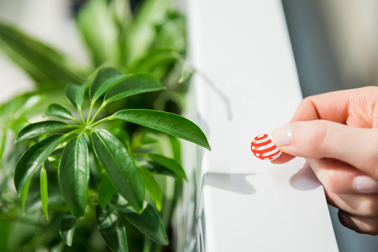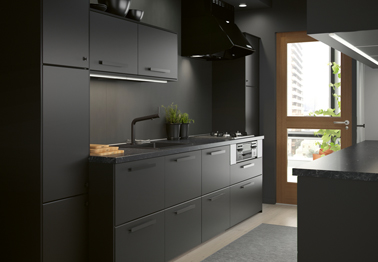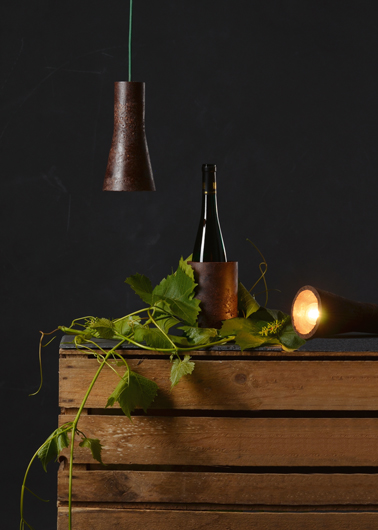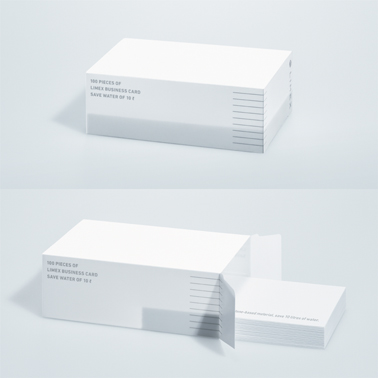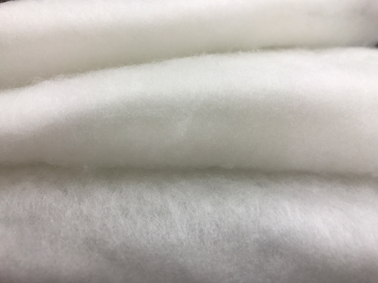The use of innovative, sustainable materials in the Red Dot Award: Product Design 2018
Sustainability plays an increasingly important role in product development. More and more designers opt for recycled materials to save resources and energy. Red Dot juror Dr. Sascha Peters, founder and owner of the agency for material and technology HAUTE INNOVATION, recognises this trend as well and praises the creativity of designers to use new, innovative materials: “Residues of the wine production, algae, straw, orange peel, pineapple fibres, fruit residues – all these are used today as a material and years ago no one would have thought of it.” In this year’s Red Dot Award: Product Design, the designers proved that recycled materials can be used to manufacture excellent products which are modern, visually appealing and intelligently designed.
KUNGSBACKA kitchen cabinet front – sustainable kitchen design
The Swedish furniture store IKEA designed the kitchen cabinet front “KUNGSBACKA” which is made of recycled wood and coated with a plastic foil manufactured from recycled PET bottles. Thus, the production of the front can go without deforestation and new plastic made from oil. It takes 25 PET bottles to produce one cabinet door, while an entire kitchen equates to 1,000 bottles.
The anthracite gray of the plastic foil gives the kitchen front a modern look. The chamfered edge on top creates a horizontal line, resulting in an interesting interplay of reflections and shadows.
Tresta – home accessories made from the residues of wine production
The residues of the wine production remain for the most part unused. The German designer Katharina Hölz developed from the so called pomace the home accessories of the “tresta” range. The residues are combined with natural binders, resulting in a new material that can be used for the production of a wide range of products and that is also biodegradable.
Depending on the type of binder, different products result that impress visually, haptically and olfactory. The combination of pomace and beeswax, for example, creates a wine cooler and a ceiling lamp. Set on top of each other, the shape is reminiscent of the Moselle-typical wine bottle. The resistant compound of pomace and pulp on the other hand can be used for the production of packaging. Pomace together with carnauba wax creates a particularly robust, dimensionally stable and sound-absorbing material - perfect for the production of wall tiles. Even in 3D printing, pomace is an alternative to plastic. To test the printability, prototypes were developed for urns.
Limex – business cards saving resources
In cooperation with the Japanese company TBM, the designer Yoshinaka Ono of the agency Dentsu created business cards made of Limex. The material Limex is a sustainable alternative to paper, which is made from limestone. In contrast to the traditional paper production, it needs less water and pulp. This saves natural resources and reduces manufacturing and raw-material costs. The business cards serve to market the material globally as they are distributed, directly, from person to person. The lines shown on the box indicate that 10 litres of water are saved producing them, compared to paper cards.
Smawarm – recycled insulation material
The companies Creative Tech Textile and Hans Global Textile created the insulation material “Smawarm” for clothing with post-consumer waste PET bottles and discarded oyster shells. The multi-layered construction is designed so that the outer layer consists of both robust and soft hollow fibres, while the denser middle layer maximises the insulation. This results in a low thermal conductivity, which increases the heat storage. The product offers further benefits in addition to its original function: it is antistatic, antibacterial, it dries quickly and is odour blocking. It is also mite-free and offers a good warmth-to-weight ratio.
Sustainable materials – a market with future
These products, all of which are awarded with a Red Dot, already prove that the awareness for sustainability in product design increases. Red Dot juror Steve Leung, a leading architect, interior and product designer from Hong Kong, emphasized during the Jury Session that today everybody is talking about environmental-friendliness. For the future, however, he hopes that even more designer will develop environmentally conscious products and establish the subject firmly in design. Which innovations will surprise us in the future in the field of materials remains to be seen.

